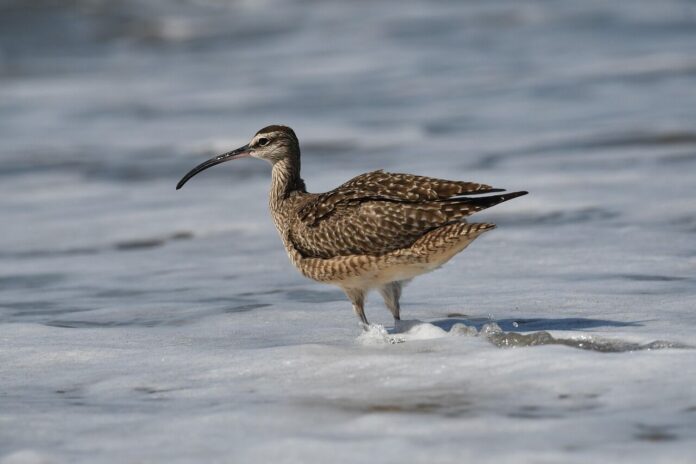Long-billed curlews have migrated into the East Kootenay for their spring nesting season, and wildlife biologists will use a drone to learn more about their breeding habitats.
Dr. David Bradley, Director of the B.C. branch of Bird Studies Canada, said researchers will focus on the Wycliffe and Skookumchuck Prairie areas.
“We’re studying the breeding habits of this species and looking at how successful they are in different land use scenarios like natural prairie, farmland, rangeland and other similar land uses,” said Bradley.
“We’ll be trying to find their nests and looking at nesting productivity in different scenarios.”
According to Bird Studies Canada, habitat ranges for long-billed curlews have declined across North America for about 150 years, in part due to intensified agriculture.
However, their range in B.C. has expanded as natural grasslands and forests have converted into agricultural lands.
Study assistant Émile Chamberland says the study is meant to discover why the vulnerable species are on the decline everywhere except for British Columbia.
“Curlew populations are pretty low compared to previous years,” said Chamberland.
“There used to be a ton of them, and we don’t exactly know what could be the reason for their decline.”
Bradley says the team will try to limit disturbances to the birds’ nesting areas while they observe the animals.
“We’re using some drone technology to look for their nests. We’ll have an infrared camera on the drone to fly over in the early morning when it’s cooler, and we’ll fly over some prairie areas to try locating some nesting sites,” said Bradley.
Long-billed curlews build their nests on the ground in open grassland, making them vulnerable to predators.
“They make nests about the size of a dinner plate, and they lay about 4 eggs that are about the same size as a turkey egg,” explained Bradley.
“Their main nest predators are ravens, magpies and crows – corvid species. They’re very smart and could find the nests very easily. They will eat the eggs very readily, and we’ve already had a case where we found a nest with broken eggs that was likely preyed on by that species. Coyotes can also be an issue, and so can badgers.”
The study will be published at the end of the year, and any information gathered will be shared with the provincial and federal governments.
“They often provide in-kind support for all the work we do, so we provide information on nesting locations,” said Bradley.
“With the nesting locations, we don’t actually release that information to the public yet because we don’t want passers-by to disturb them at all, because the birds are quite sensitive to disturbance. We release that information at the end of the year, once they’re finished, because they tend not to use the same nest between years.”
Be the first to know! Don’t miss out on breaking news and daily updates in your area. Sign up to MyEastKootenayNow News Alerts.




